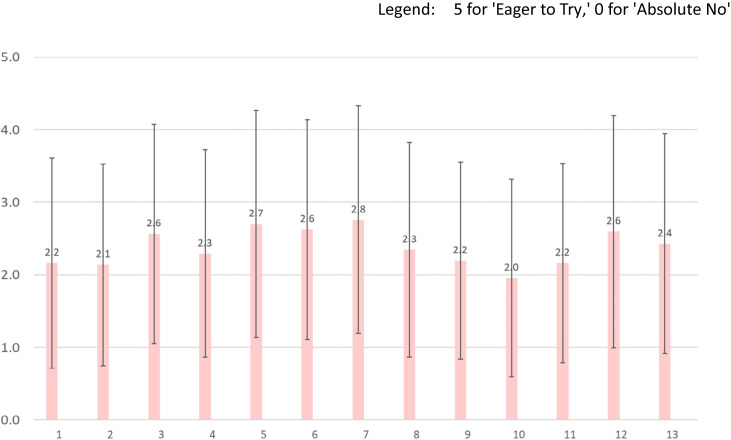Fig. 1.
Average ‘Want to Try’ ratings by Product. This figure shows an average and standard deviation of ‘Want to Try’ ratings by Product. The data shows the percentage of respondents who rated their willingness to try gene-edited foods on a scale from 0 (Absolutely no) to 5 (Eager to try). The specific question posed was: ‘Regarding foods made using genome editing techniques, would you like to try eating them? Please choose one option for each of the following.’ Remarks: 1 = Red seabream with increased meat yield, 2 = High yield rice, 3 = Potatoes effective against dementia, 4 = Allergen free buckwheat, 5 = Tomatoes rich in carotene and lycopene, 6 = Wheat rich in fiber, 7 = Good-tasting rice, 8 = Pest resistent Buri, 9 = High-temperature tolerant rice, 10 = Docile tuna, 11 = Wheat tolerant to moisture, 12 = High-sugar melons, 13 = Caffeine-free teas; The graphs’ error bars represent the standard deviation. The product names listed above are literal English translations of the Japanese language names in the survey, not authentic scientific names.

